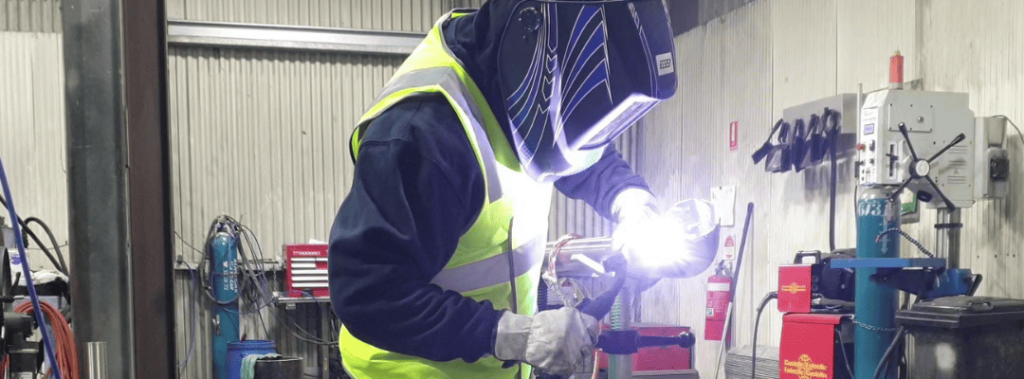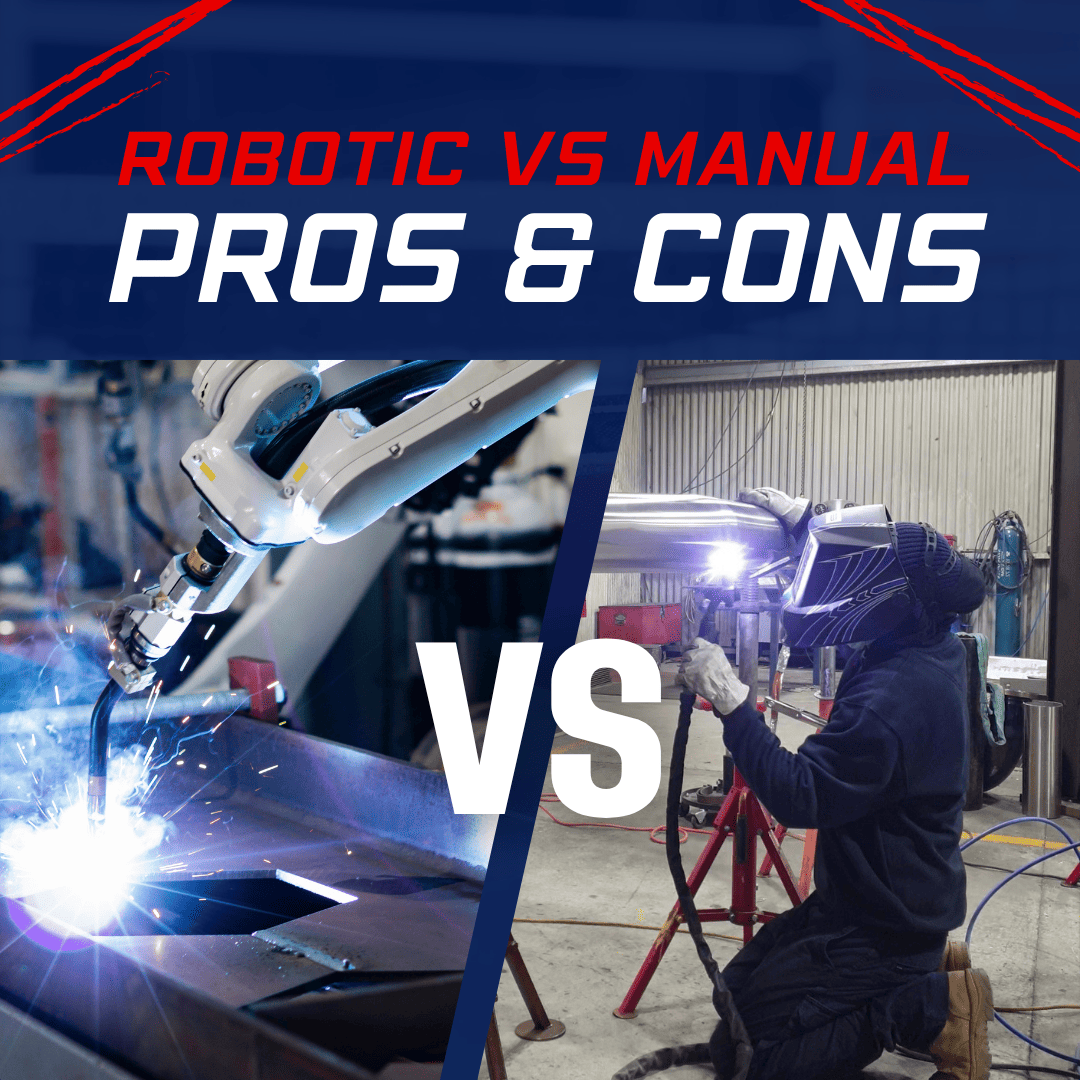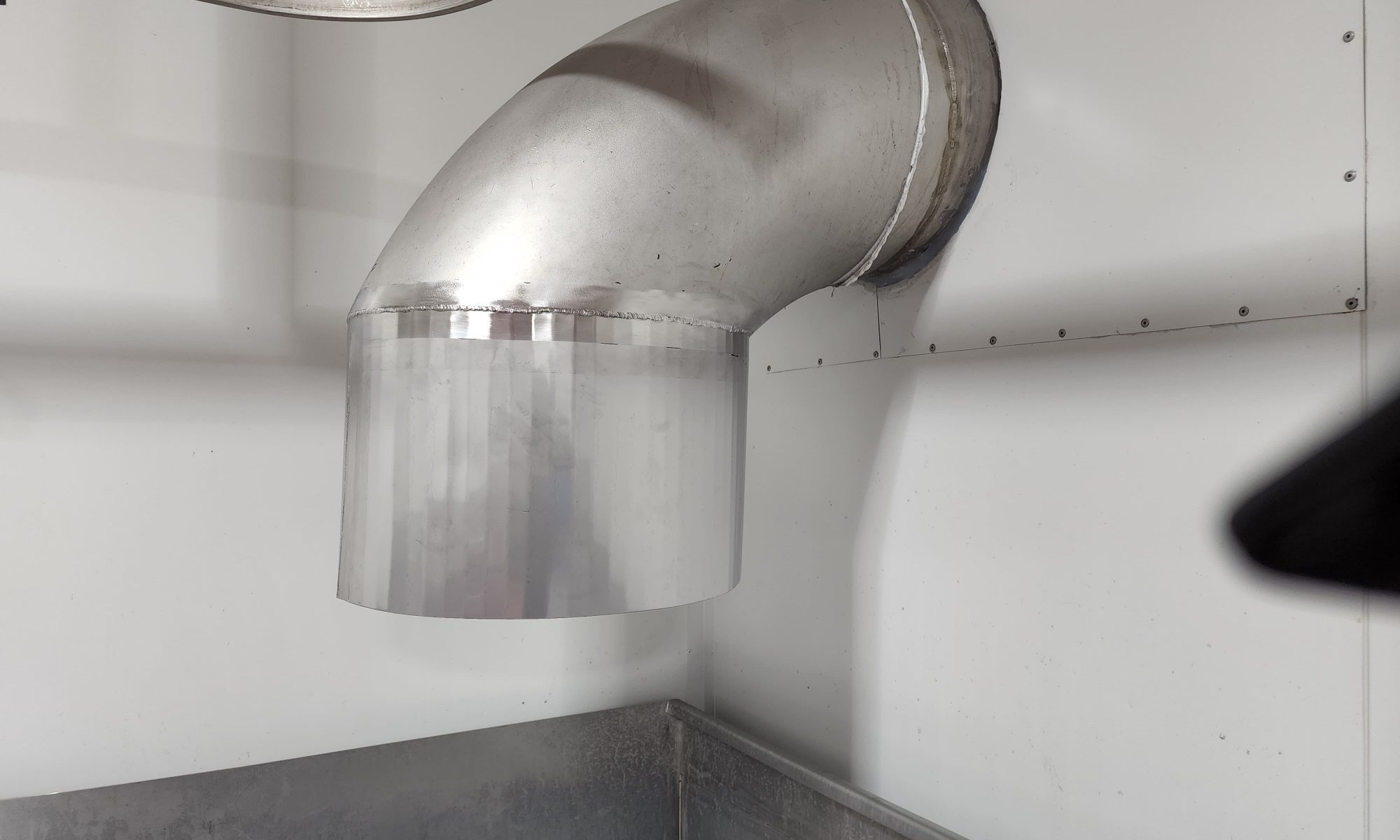Comparing Robotic and Manual Welding for Metal Fabrication
When it comes to metal fabrication, robotic welding and manual welding each have their own advantages and challenges. Choosing between them depends on your specific needs, the scale of your project, and your shop’s capabilities. This comparison of robotic vs manual welding aims to guide your decision.
Robotic vs manual welding: Understand the difference
Robotic welding is an automated process, typically suited for large-scale production environments, like automotive manufacturing. It can be fully or semi-automated, sometimes needing human help to load or unload materials. Manual welding, done entirely by skilled workers, is better for custom or smaller jobs requiring precision and craftsmanship.

Advantages of Robotic WElding System
Superior Reproducibility: Achieves unparalleled weld consistency, bear uniformity, and penetration control across high volumes.
Accelerated Throughput & Enhanced Safety: Significantly boosts production rates while minimizing human exposure to hazardous welding fumes and arc flash.
Optimized material utilization: Precise programming drastically reduces material waste and rework rates, leading to higher yield.
Reduced Variable Labor Costs: Lowers per-unit labor expenditure, particularly beneficial for long-term, high-volume contracts.
Strategic Considerations for Robotic welding
Substantial Capital Outlay: requires significant initial investment in robotics, specialized fixturing, and programming.
Limited Adaptability for Customization: Optimal for repetitive tasks; re-tooling and reprogramming for varied geometries can incur substantial downtime and cost.
System Vulnerability: Production lines can experience significant interruptions in the event of equipment malfunction or software issues.

Advantages of Manual Welding Expertise
Unrivaled detail & Aesthetic Finish: Certified welders deliver intricate, high-quality finishes crucial for visual appeal or complex joint requirements.
Exceptional Agility & Versatility: Adapts seamlessly to unique project geometries, low-volume production, and prototype development without extensive re-tooling.
On-the-Fly Problem Resolution: Human judgement allows for immediate identification and correction of material inconsistencies or unexpected welding conditions.
Flexible Resource Deployment: Workforce can be rapidly re-tasked across diverse projects based on evolving production priorities.
Strategic considerationss for manual welding
Variable Production Pace: Inherent human limitations result in slower throughput compared to automated systems, less suitable for mass production.
Reproducibility Challenges: Achieving perfect, identical welds across large batches can be difficult, leading to minor cosmetic or structural variations.
Operational Risk Factors: Involves direct human exposure to welding hazards, necessitating stringent safety protocols and continuous training investments.
The choice between robotic and manual welding is a critical strategic decision impacting your project’s cost-effectiveness, quality benchmarks, and delivery timelines. A nuanced understanding of each method’s strengths and limitations is paramount to project success.




